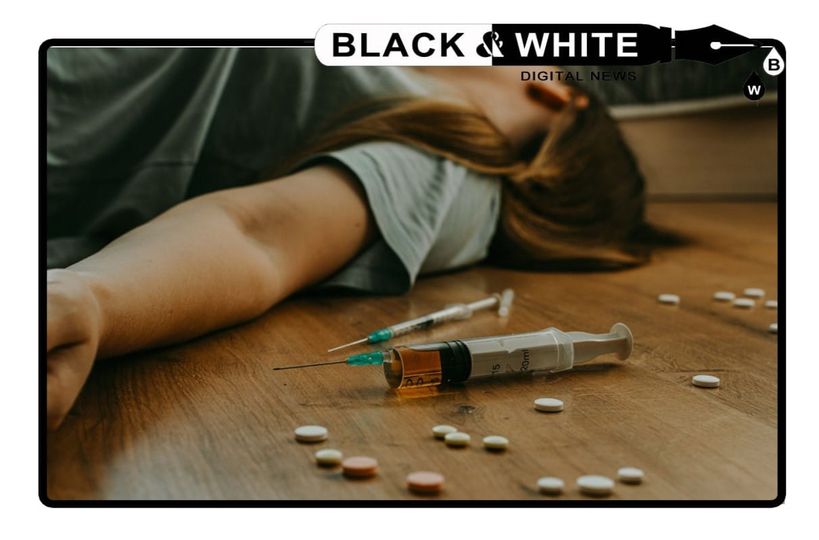Alarming Surge in Suicides in Jammu & Kashmir Linked to Mental Health Crisis and Drug Abuse.
Rising Suicide Rates Paint a Grim Picture.
||Black and White Digital News||
Parvinder Singh, May 14, 2024
The latest report from the National Crime Records Bureau (NCRB), published in December 2023, reveals a disturbing trend in Jammu and Kashmir. Out of 1,769 suicides recorded nationwide in 2022, a staggering 497 were from this region, marking a sharp increase from 472 in 2020. The pandemic year saw over 450 suicides, the highest in a decade, contributing to a total of 3,024 suicides from 2010 to 2020 in the valley.
The State Disaster Response Force data from February 2021 to August 2022 echoes this grim reality, with 365 attempts and 127 deaths documented. The male-to-female ratio of suicide victims also remains troubling, with a 73:27 split in 2021, compared to 71:29 in 2020.
*The COVID-19 Effect*
A 2023 study titled “A Study on Factors Influencing Youth to Commit Suicide in Kashmir” points to COVID-19 as a significant factor in the rising suicide rates. The pandemic exacerbated social issues such as unemployment, social isolation, family conflicts, academic failures, and relationship breakdowns. The report particularly highlights Budgam district in central Kashmir as the area with the highest number of suicide attempts since 2020.
*Mental Health: The Underlying Crisis*
Mental health professionals, underscore the strong link between mental health conditions and suicides. Chronic stress, emotional distress, anxiety, and depression are prevalent in Kashmir, with one in two individuals showing signs of depression. A 2020 study found that 45% of Kashmir’s adult population (approximately 1.8 million people) suffer from some form of mental distress. The region records high rates of depression (41%), anxiety (26%), post-traumatic stress disorder (19%), and trauma (47%).
The Institute of Mental Health and Neurosciences (IMHANS) in Srinagar has observed a dramatic increase in outpatient visits for mental health issues, from 100 per week in 1980 to 200-300 per day in 2013. The number of suicide attempts also rose by more than 250% between 1994 and 2012, reflecting the region’s profound mental health challenges.
*The Dangerous Intersection of Drugs and Depression*
The intersection of drug addiction and mental health issues. Anxiety and depression often lead to harmful coping mechanisms such as drug abuse, creating a vicious cycle. Opioids and other substances may provide temporary relief but typically result in deeper despair and increased risk of overdose.
The United Nations Office on Drugs and Crime reported a staggering 1,500% increase in drug addiction in Jammu and Kashmir from 2018 to 2021, with 60,000 people grappling with addiction. The number of patients at IMHANS seeking treatment for heroin addiction surged from 489 in 2016 to 7,420 in 2019, and despite a dip during the pandemic, rose to 13,500 in 2021.
Data from the Ministry of Social Justice and Empowerment presented in Parliament reveals that over 10 lakh people in Jammu and Kashmir (7.6% of the population) consume drugs, with a shocking 1,68,700 children aged 10-17 using substances like cannabis, opioids, sedatives, and inhalants.
*The Role of Social Stigma*
One of the most significant barriers to addressing mental health and drug addiction issues in Kashmir is social stigma. Medical professionals emphasize the devastating impact of societal disapproval, which often leads to isolation and silence, deterring individuals from seeking help. The persistent stigma around mental health and suicides exacerbates feelings of helplessness and despair.
*Bridging the Gap:Mental Health Infrastructure*
According to the 2011 census, Jammu and Kashmir’s population of 12.5 million is served by only 41 psychiatrists, mostly affiliated with major hospitals like GMC Jammu, GMC Srinagar, and SKIMS. The region has 140 indoor beds across 10 districts, with outpatient services provided by 16 psychiatrists, 12 psychologists, and one social worker. Despite improvements in treatment facilities, the need for more trained professionals and resources remains critical.
*A Call to Action*
I personally advocate for the optimization of existing resources and integration of clinical psychologists into the government sector which stresses the importance of early mental health education through School Mental Health Programs to address the rising suicide rates among young people. Social connections and holistic support, including counseling and medication, are vital. The government has made strides by establishing mental health helplines such as the “TELE MANAS” and “Sakoon” helplines, but more comprehensive efforts are needed to tackle this crisis effectively.
As Jammu and Kashmir confronts a mental health and drug abuse crisis, the alarming rise in suicides underscores the urgent need for increased awareness, better infrastructure, and destigmatization of mental health issues. Only through collective efforts can this growing menace be addressed and mitigated.
#RRSwain
#adgpjammu
#adgpcid
#drugfree
#divcomjammu
#divcomkashmir
#lgmanojsinha









